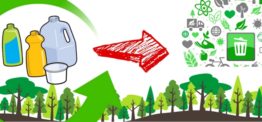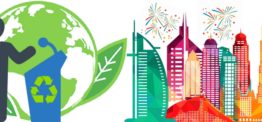
Why the Plastics and Recycling Conference was Worth the Investment
Written by: Vinny Licari
Recently, I went on my first business trip with BlackBridge Investments to the Plastics Recycling Conference down in New Orleans. This was a great opportunity for my company and I to network, promote and build on our company’s brand image. It was a great place to build on our current business relationships and get educated on the latest trends affecting the plastics recycling industry. Lots of small businesses and scrap plastic traders might wonder if it’s really “worth it” to invest in the costs of traveling to a conference – especially if you’re bringing multiple employees. But from our experience, I would definitely say that this conference was well worth the money we spent. Here are a few of the reasons why the Plastics Recycling Conference was a great value to help make our company more competitive and better at meeting our customers’ needs:
Personally, my experience at the conference was eye opening. I enjoyed visiting each and every booth, learning about the different business operations that exist in the industry. There are so many technical aspects of the scrap plastic trading business that can best be appreciated and understood by seeing the machinery and processes illustrated up close and in person. What interested me the most was seeing how many different steps it takes for plastic material to get recycled and transformed into a new product. Starting at the recycling center, the scrap plastic material gets grinded, washed, extruded into pellets, pulverized, and compounded into new polymers. These new polymers are then sold to blow-molders and injection-molders to get transformed into new products. The material can exchange hands up to four or five times before becoming an end-use product. The supply chain was an interesting and in depth process that was difficult to learn. An additional learning curve to the process is the numerous kinds of plastic materials that flow through the supply chain. Learning the different types of names of plastic materials, such as polyethylene, poly-tetrafluoroethylene, polypropylene, and more, was an even larger learning curve. But all of these learning experiences gave our team valuable insights into how our customers and trading partners use their scrap plastic material, and helped us have a broader understanding of our partners’ daily business challenges.
Another great insight from the conference – and this sounds obvious, but it was surprisingly powerful – was just how great it was to meet with people face to face. In our business, we spend a lot of time on the phone, and there are lots of people that we’ve done business with for years who we might never have met in person. Communication with people face to face at the conference, instead of just over the phone, was a nice change of pace. It was fun and reassuring to meet a lot of other people in the industry who we usually only interact with as a voice on the phone, and it was a heartening experience to spend time in the same place and talk about the overall trends in our industry and realize that we’re all on the same side, we’re all professionals, and we’re all on the same mission.
It was also encouraging to talk with people about their latest challenges and their overall expectations and vision for our industry’s future. Most people at the conference understood that the scrap plastic market was down, with the main driving factors being a decrease in oil prices, China exchange rates, and China decreasing the amount of recyclables they import exponentially. However, this doesn’t have to be a cause for pessimism! There were lots of exciting speakers at the conference who gave everyone some exciting new ideas about where our industry is heading, despite what’s happening with oil prices or Chinese imports.
For example, after hearing Phillip Karig, Tison Keel and Joel Morales speak Tuesday morning about the resin market, it was understood that innovation can turn any market around. The plastic recycling industry needs more entrepreneurial companies to find supplementary uses for the excess supply of raw materials in the market. Some companies are already developing solutions such as building sidewalks, road dividers and irrigation pipe out of recycled plastic material.
In conclusion, the paper and plastics conference was a great place to learn about the industry, overall trends in the scrap plastic market, and different innovative solutions. Everyone on our team gained some powerful insights that we are going to bring back to BlackBridge and put to work immediately. I highly recommend the Plastics Recycling Conference as a fun and stimulating opportunity for a recycling business to network, expand its brand awareness, and build on existing business.




